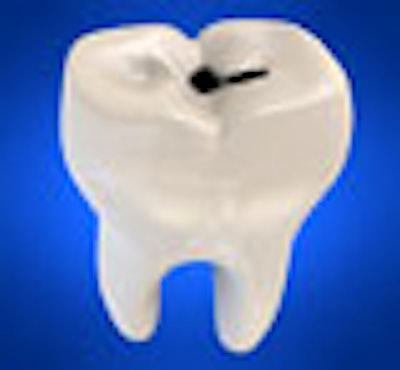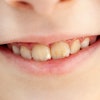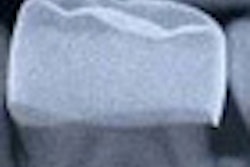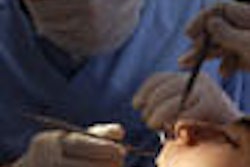
Is placing a crown without preparing the tooth a brilliant innovation or dangerous negligence? Debate on that question is heating up as Scottish researchers spread the news of their no-drill Hall Technique around the globe.
The Hall Technique gets its name from Norna Hall, B.D.S., a general dentist in rural Scotland where there are many children with caries and few pediatric dentists available. To avoid the need for both drilling and anesthesia, Dr. Hall developed a technique of carefully cementing preformed metal crowns over untreated primary molars. The approach works, say proponents, because it seals the lesion, starving the bacteria and arresting the progress of the caries on that surface.
But the notion of placing a crown without preparing the tooth may come as close to heresy as dentistry gets. One reader called DrBicuspid.com "irresponsible" just for reporting about a recent study on the Hall Technique. On the other hand, a contributor to the DentalCom online forum called the technique "a big revolution in children's dentistry."
To get deeper perspective, we asked Steven Adair, D.D.S., M.S., chair of pediatric dentistry at Georgia Medical College and editor-in-chief of Pediatric Dentistry, to comment on the study. His reaction was scathing, so we also got a response from one of the study's co-authors, Dafydd Evans, B.D.S., F.D.S, Ph.D., senior lecturer in pediatric dentistry at the University of Dundee, Scotland. Here are Dr. Adair's criticisms with a point-by-point rebuttal by Dr. Evans.
Adair: "While the authors stated that the patients' occlusions rapidly equilibrated to the hyperocclusion of the crowns, I'm concerned that such a fit could lead to pain and/or TMD [temporal mandibular disorder] symptoms in some patients. Leaving restoration 'high' is not, in my opinion, good practice."
Evans (and co-authors, quoted from the study): "In this study, no child [who] re-attended their dentist following placement of a Hall PMC [preformed metal crown] [showed] signs or symptoms of occlusal dysfunction, and no child or parent reported difficulty with eating or symptoms of TMJ [temporal mandibular joint] dysfunction syndrome."
Adair: "I could not find any reference to examinations for gingival inflammation or periodontal problems in the study [as a possible result of poor marginal fit]. Again, this could be a significant issue for some patients, and does not meet current standards of care, in my opinion."
Evans: "The fact is that our clinical trial found no evidence that any of these concerns might be valid, with some of the children now in the fourth or fifth year of recall."
Adair: "Compression or stretching of the PDL [periodontal ligament] of adjacent teeth .... could lead to further periodontal problems and unwanted orthodontic tooth movement."
Evans: "The compression of the PDL is no more than most children will experience when separators are fitted prior to orthodontic band-up. The mesial of the first permanent molars were also assessed for periodontal problems which might be visible radiographically as part of the radiographic review of bitewings taken at recall visits, and again, no problems were noted."
Adair:"Follow-up examinations of the children in this study could not be done in a 'blind' manner. I found no mention of this shortcoming in the paper. Therefore, one has to consider that examiner bias was not controlled for."
Evans: "We deliberately chose to run the study .... using general dental practitioners. We felt that the advantages of testing the efficacy of the interventions in the environment where they would normally be provided outweighed the disadvantages of necessarily having to have the dentists evaluate their own restorations.However, all the radiographs from the study were separately evaluated by the study coordinators."
Adair: "While I am a proponent of minimally invasive dentistry, in my opinion the Hall Technique is 'sloppy' dentistry which may appeal to practitioners who loathe to use local anesthesia with children and/or who do not know how to properly place an SSC [stainless steel crown]."
Evans: "This is fairly typical of comments we have from specialist practitioners in the UK [United Kingdom], but not, interestingly, from general dental practitioners. I wish that every child in every country had instant, free access to specialist pediatric dental care, with inhalation sedation as standard. If that were the case, then there might be no need for the Hall Technique.
"However, this is not the case. Look at the figures from our study; 19 of the teeth restored conventionally had a pulpal event, compared with just 3 of the Hall teeth, and this was for children accessing dental care! Conventional management of primary teeth in the UK is not addressing the problem of dental sepsis in children, so we need to take a fresh look. Such a look, I suggest, might also be needed in disadvantaged communities elsewhere in the world.Just because a technique is different doesn't make it 'sloppy.'
"We're all on the same side, trying to keep children free from pain and sepsis, and manage their disease without making things worse for them. Our study needs to be repeated, of course, but the evidence from it, and from our audit of Dr. Hall's practice records, indicates that the Hall Technique can be an effective option (option, note, and not the only one!), for managing carious primary molar teeth.



















